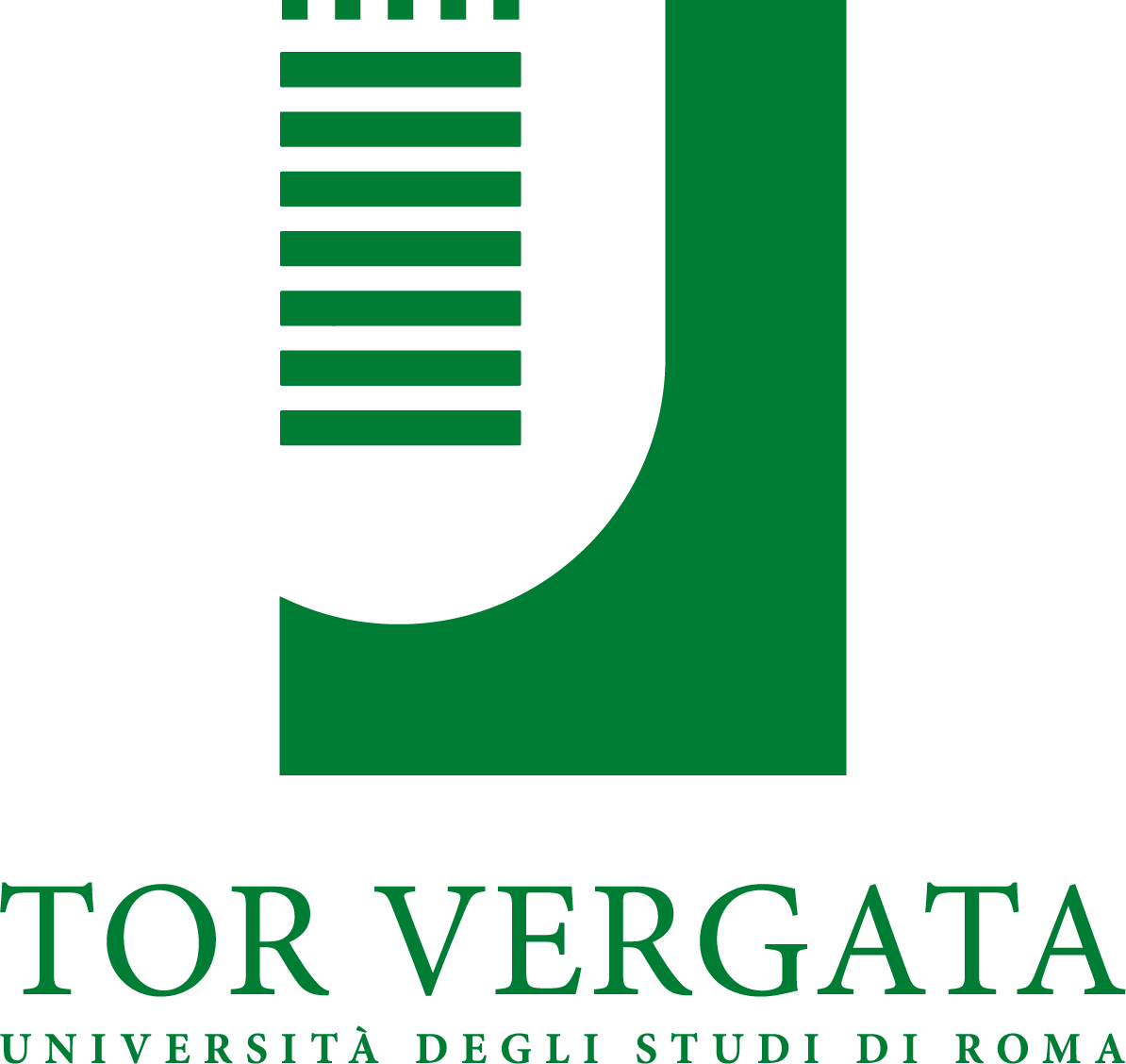
Curriculum vitae
1984-2001: Research Assistant, Department of Biology, University of Rome “Tor Vergata”
2001-today: Associate Professor of Biochemistry, Department of Biology, University of Rome “Tor Vergata”
1984 till 1987: guest researcher at the Department of Toxicology of the Karolinska Institutet, Stockholm, Sweden, and at the Faculty of Pharmacy, University of Toronto, Canada.
Currently, she teaches “Nutritional Biochemistry” at the Human Biology and Evolution course (second level degree course) and is a member of the PhD Program “Molecular and Cell Biology”, being tutor and supervisor for the PhD students.
She serves as the Co-ordinator of the degree courses in Biological Sciences (first and second levels).
She is author of 55 papers on indexed journals, and of book chapters, and she also was book editor.
Grants (last five years)
• MIUR, PRIN (Italy): Study on mitochondrial alteration in cell models of familial amyotrophic lateral sclerosis.
• Health Ministry (Italy): Tolerance and efficacy of ammonium tetrathiomolybdate in Alzheimer disease.
Research topics
Research activity is currently focused on studies on the molecular mechanisms regulating the homeostasis of copper (a redox transition metal, which is essential for cell metabolism), and on the consequences of its alteration, in various cell and animal models, as well as in pathological conditions; related effects on the cell redox status and mitochondrial function are also investigated.
Particularly, the role of copper dysmetabolism in neurodegenerative diseases, like Alzheirmer’s disease (AD) or amyotrophic lateral sclerosis (ALS), was investigated. AD patients showed increase of copper level, oxidative stress and the decrease of the antioxidant defense in the serum, as well as alteration of SOD1 enzyme in the erythrocytes. The main finding was that the serum of these patients shows unbound copper, not associated to the main serum copper protein, ceruloplasmin. Increased copper levels were also found in AD fibroblasts, which proved to be more susceptible to oxidative stress; polyphenol antioxidants (e.g. curcumin) were found to play a protective role, due to their intrinsic capability to bind copper and control its noxious redox activity. The bulk of these results supports the hypothesis that the alteration of copper homeostasis is involved in AD; copper-dependent parameters may thus be used as markers for the in vivo diagnosis and copper-binding molecules as putative drugs for this disease.
Another recent research line focused on the involvement of copper dysmetabolism in the mechanisms of toxicity of SOD1 mutants associated with the familial form of ALS towards the motor neuron and the mitochondrion. The results obtained in cell models of the disease lead to the conclusion that copper deficiency does not increase the toxic effect of SOD1 mutants to mitochondria; the mechanism of toxicity seems rather to rely on nitric oxide production induced by the mutants.
The studies on the mechanisms and molecules regulating copper homeostasis are currently carried out by investigating in cell models the effects of the alteration of the cell redox status on the function of the proteins which participate to the complex network orchestrating cellular copper uptake and distribution.
Selected publications
1. ROSSI L, VALLE C, CARRÌ MT. (2012). “Altered gene expression, mitochondrial damage and oxidative stress: converging routes in motor neuron degeneration. “. INTERNATIONAL JOURNAL OF CELL BIOLOGY, vol. 2012(2012), ISSN: 1687-8876, doi: 10.1155/2012/908724
2. ARCIELLO M, CAPO CR, D’ANNIBALE S, COZZOLINO M, FERRI A, CARRÌ MT, ROSSI L (2011). Copper depletion increases the mitochondrial- associated SOD1 in neuronal cells. BIOMETALS, vol. 24, p. 269-278, ISSN: 0966-0844, doi: 10.1007/s10534-010-9392-3
3. ARCIELLO M, CAPO CR, COZZOLINO M, FERRI A, NENCINI M, CARRÌ MT, ROSSI L (2010). Inactivation of cytochrome c oxidase by mutant SOD1s in mouse motoneuronal NSC-34 cells is independent from copper availability but is because of nitric oxide. JOURNAL OF NEUROCHEMISTRY, vol. 112, p. 183-192, ISSN: 0022-3042, doi: 10.1111/j.1471-4159.2009.06441.x
4. ROSSI L, MAZZITELLI S, ARCIELLO M, CAPO CR, ROTILIO G (2008). Benefits from dietary polyphenols for brain aging and Alzheimer’s disease. NEUROCHEMICAL RESEARCH, vol. 33, p. 2390-2400, ISSN: 0364-3190, doi: 10.1007/s11064-008-9696-7
5. ROSSI L, SQUITTI R, CALABRESE L, ROTILIO G, ROSSINI PM (2007). Alteration of peripheral markers of copper homeostasis in Alzheimer’s disease patients: implications in aetiology and therapy. THE JOURNAL OF NUTRITION, HEALTH & AGING, vol. 11, p. 408-417, ISSN: 1279-7707
6. SQUITTI R, BARBATI G, ROSSI L, VENTRIGLIA M, DAL FORNO G, CESARETTI S, MOFFA F, CARIDI I, CASSETTA E, PASQUALETTI P, CALABRESE L, LUPOI D, ROSSINI PM (2006). Excess of non-ceruloplasmin serum copper in AD correlates with MMSE, CSF beta-amyloid and h-tau. NEUROLOGY, vol. 67, p. 76-82, ISSN: 0028-3878, doi: 10.1212/01.wnl.0000223343.82809.cf
7. SQUITTI R, BARBATI G, ROSSI L, VENTRIGLIA M, DAL FORNO G, CESARETTI S, MOFFA F, CARIDI I,CASSETTA E, PASQUALETTI P, CALABRESE L, LUPOI D, ROSSINI PM (2006). Excess of nonceruloplasmin serum copper in AD correlates with MMSE, CSF beta-amyloid and h-tau. NEUROLOGY, vol. 67, p. 76-82, ISSN: 0028-3878, doi: 10.1212/01.wnl.0000223343.82809.cf.
8. ARCIELLO M, ROTILIO G, ROSSI L (2005). Copper-dependent toxicity in SH-SY5Y neuroblastoma cells involves mitochondrial damage. BIOCHEMICAL AND BIOPHYSICAL RESEARCH COMMUNICATIONS, vol.327, p. 454-459, ISSN: 0006-291X, doi: 10.1016/j.bbrc.2004.12.022
9. SQUITTI R, PASQUALETTI P, DAL FORNO G, MOFFA F, CASSETTA E, LUPOI D, VERNIERI F, ROSSI L, BALDASSINI M, ROSSINI PM (2005). Excess of serum copper not related to ceruloplasmin in Alzheimer disease. NEUROLOGY, vol. 64, p. 1040-1046, ISSN: 0028-3878, doi: 10.1212/01.WNL.0000154531.79362.23
10. ROSSI L, LOMBARDO MF, CIRIOLO MR, ROTILIO G (2004). Mitochondrial dysfunction in neurodegenerative diseases associated with copper imbalance. NEUROCHEMICAL RESEARCH, vol. 29, p. 493-504, ISSN: 0364-3190, doi:10.1023/B:NERE.0000014820.99232.8
11. LOMBARDO MF, CIRIOLO MR, ROTILIO G, ROSSI L (2003). Prolonged copper depletion inducesexpression of antioxidants and triggers apoptosis in SH-SY5Y neuroblastoma cells. CELLULAR ANDMOLECULAR LIFE SCIENCES, vol. 60, p. 1733-1743, ISSN: 1420-682X, doi:10.1007/s00018-003-3153-1
12. ROSSI L, SQUITTI R, PASQUALETTI P, MARCHESE E, CASSETTA E, FORASTIERE E, ROTILIO G,ROSSINI PM, FINAZZI-AGRÒ A (2002). Red blood cell copper, zinc superoxide dismutase is higher in Alzheimer’s disease and is decreased by D-penicillamine. NEUROSCIENCE LETTERS, vol. 329, p. 137-140, ISSN: 0304-3940, doi: 10.1016/S0304-3940(02)00599-2
13. SQUITTI R, LUPOI D, PASQUALETTI P, DAL FORNO G, VERNIERI F, CHIOVENDA P, ROSSI L, CORTESI M, CASSETTA E, ROSSINI PM (2002). Elevation of serum copper levels in Alzheimer’s disease. NEUROLOGY, vol. 59, p. 1153-1161, ISSN: 0028-3878, doi: 10.1212/WNL.59.8.1153
14. ROSSI L, DE MARTINO A, MARCHESE E, PICCIRILLI S, ROTILIO G, CIRIOLO MR (2001).Neurodegeneration in the animal model of Menkes’ disease involves bcl-2-linked apoptosis. NEUROSCIENCE, vol. 103, p. 181-188, ISSN: 0306-4522, doi: 10.1016/S0306-4522(00)00562-5
15. ROSSI L, MARCHESE E, LOMBARDO MF, ROTILIO G, CIRIOLO MR (2001). Increased susceptibility of copper-deficient neuroblastoma cells to oxidative stress-mediated apoptosis. FREE RADICAL BIOLOGY & MEDICINE, vol. 30, p. 1177-1187, ISSN: 0891-5849, doi: 10.1016/S0891-5849(01)00533-0
16. CIRIOLO MR, DE MARTINO A, LAFAVIA E, ROSSI L, CARRI’ MT, ROTILIO G (2000). Cu, Zn superoxide dismutase-dependent apoptosis induced by nitric oxide in neuronal cells. THE JOURNAL OF BIOLOGICAL CHEMISTRY, vol. 275, p. 5065-5072, ISSN: 0021-9258, doi: 10.1074/jbc.275.7.5065
17. ROSSI L, LIPPE G, MARCHESE E, DE MARTINO A, ROTILIO G, CIRIOLO MR (1998). Decrease of cytochrome c oxidase protein in heart mitochondria of copper-deficient rats. BIOMETALS, vol. 11, p. 207-212, ISSN: 0966-0844, doi: 10.1023/A:1009274131473
18. ROSSI L, MARCHESE E, DE MARTINO A, ROTILIO G, CIRIOLO MR (1997). Purification of a fully metal-depleted Cu, Zn superoxide dismutase from copper-deficient rat liver. BIOMETALS, vol. 10, p. 257-262, ISSN: 0966-0844, doi: 10.1023/A:1018364130807
19. ROSSI L, CIRIOLO MR, MARCHESE E, DE MARTINO A, GIORGI M, ROTILIO G (1994). Differential decrease of copper content and of copper binding to superoxide dismutase in liver, heart and brain of copper-deficient rats. BIOCHEMICAL AND BIOPHYSICAL RESEARCH COMMUNICATIONS, vol. 203, p. 1028-1034, ISSN: 0006-291X, doi: 10.1006/bbrc.1994.2285
20. ROSSI L, SILVA JM, MC GIRR LG, O’BRIEN PJ (1988). “Nitrofurantoin-mediated oxidative stress cytotoxicity in isolated rat hepatocytes.”. BIOCHEMICAL PHARMACOLOGY, vol. 37, p. 3109-3117, ISSN: 0006-2952, doi: 10.1016/0006-2952(88)90308-5
21. ROSSI L, MC GIRR LG, SILVA J, O’ BRIEN P J (1988). “The metabolism of N-acetyl-3,5-dimethyl-p-benzoquinone imine in isolated hepatocytes involves deacetylation. “. MOLECULAR PHARMACOLOGY, vol. 34, p. 674-681, ISSN: 0026-895X
22. MOORE GA, ROSSI L, NICOTERA P, ORRENIUS S, O’BRIEN PJ (1987). “Quinone toxicity in hepatocytes: studies on mitochondrial Ca2+ release induced by benzoquinone derivatives.”. ARCHIVES OF BIOCHEMISTRY AND BIOPHYSICS, vol. 259, p. 283-295, ISSN: 0003-9861, doi: 10.1016/0003-9861(87)90495-4
23. ROSSI L, MOORE GA, ORRENIUS S, O’BRIEN PJ (1986). “Quinone toxicity in hepatocytes without oxidative stress.”. ARCHIVES OF BIOCHEMISTRY AND BIOPHYSICS, vol. 251, p. 25-35, ISSN: 0003-9861, doi:10.1016/0003-9861(86)90047-0
24. MAVELLI I, CIRIOLO MR, ROSSI L, MELONI T, FORTELEONI G, DE FLORA A, BENATTI U, MORELLI A, ROTILIO G (1984). “Favism: a hemolytic disease associated with increased superoxide dismutase and decreased glutathione peroxidase activities in red blood cells. “. EUROPEAN JOURNAL OF BIOCHEMISTRY, vol.139, p. 13-18, ISSN: 0014-2956, doi: 10.1111/j.1432-1033.1984.tb07969.x
25. COCCO D, MAVELLI I, ROSSI L, ROTILIO G (1983). “Reduced anion binding and anion inhibition in Cu, Zn superoxide dismutase chemically modified at lysines without alteration of the rhombic distortion of the copper site. “. BIOCHEMICAL AND BIOPHYSICAL RESEARCH COMMUNICATIONS, vol. 111, p. 860-864,ISSN: 0006-291X, doi: 10.1016/0003-9861(86)90047-0
Research group components
Luisa Rossi luisa.rossi@uniroma2.it
Concetta R. Capo (Senior Technician) capo@uniroma2.it
Maria Lisa De Benedetto (PhD student) maria-lisa@hotmail.it





Università di Tor Vergata